The dense canopies of forests are home to a variety of creatures that have evolved to thrive in these unique environments. These animals are often elusive, little-known to many, and perfectly adapted to life above the forest floor. Let’s explore some fascinating examples of forest dwellers and how they manage to survive and flourish high in the trees.
Colugo (Flying Lemur)
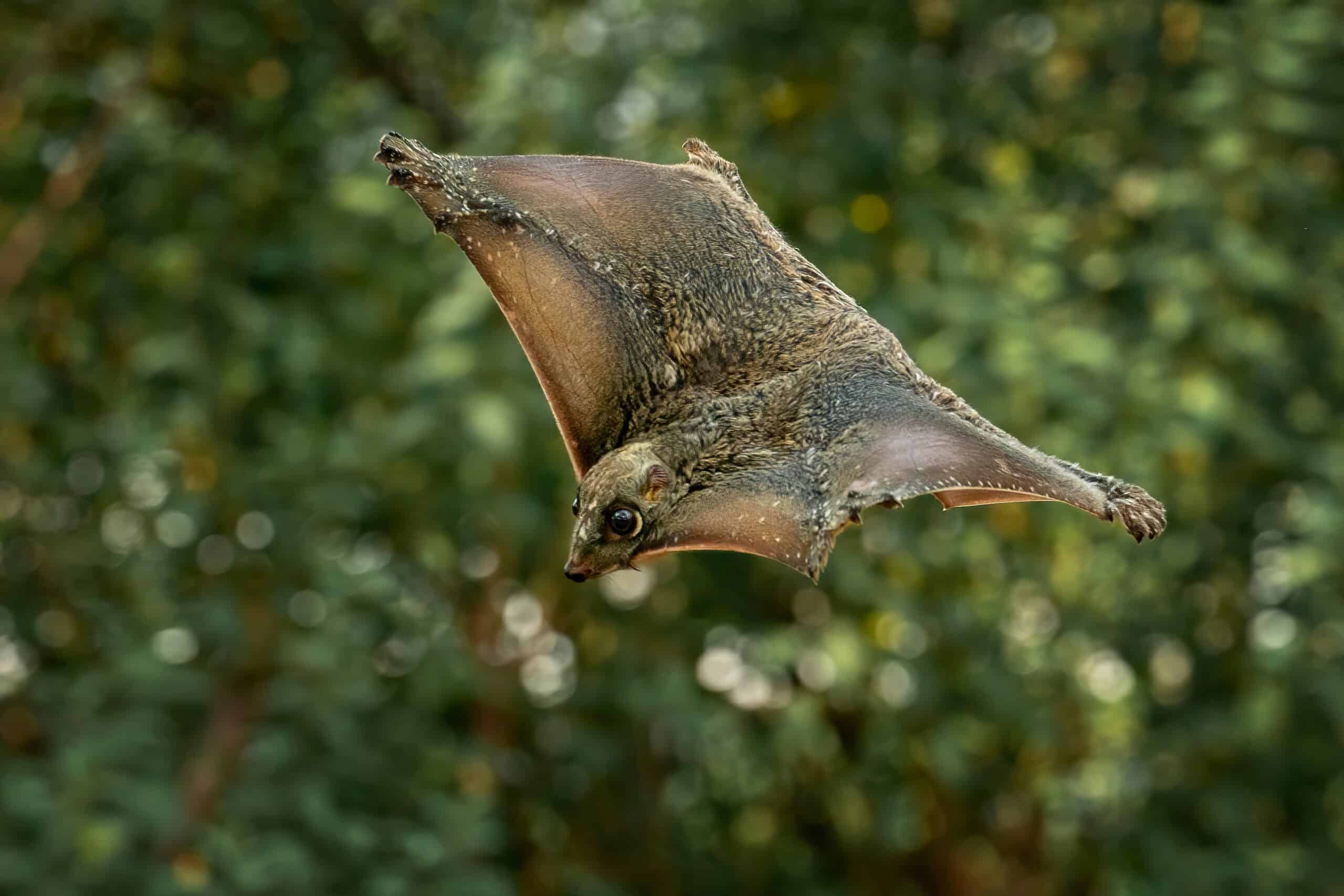
The Colugo, often called a flying lemur, is a master of gliding through forest canopies. It has a large membrane stretching from its neck to the tips of its fingers, toes, and tail, enabling it to glide for distances over 100 meters. Despite its name, the Colugo doesn’t actually fly or belong to the lemur family. Its lightweight body and sharp claws help it cling to tree trunks as it moves slowly through the treetops. These creatures are nocturnal, feeding primarily on leaves, flowers, and fruits.
Green Tree Python
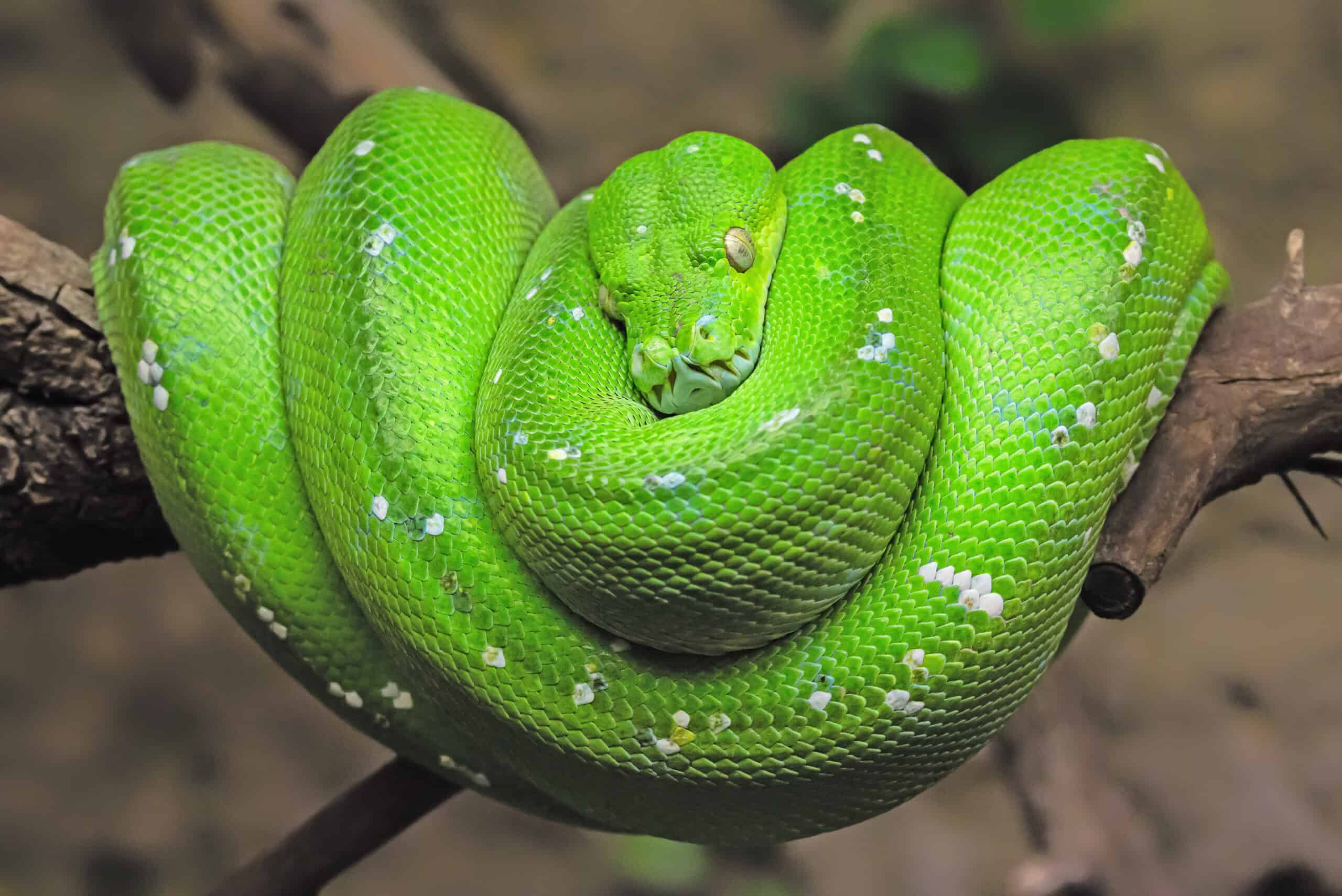
The Green Tree Python is an arboreal snake known for its striking green coloration, which blends perfectly with the forest canopy. It spends most of its life coiled on tree branches, waiting for prey to pass by. This python is a master ambush predator, using its long, muscular body to constrict birds, small mammals, and reptiles. Its prehensile tail helps it grip branches securely, making it highly adapted to life in the trees.
Red-Eyed Tree Frog
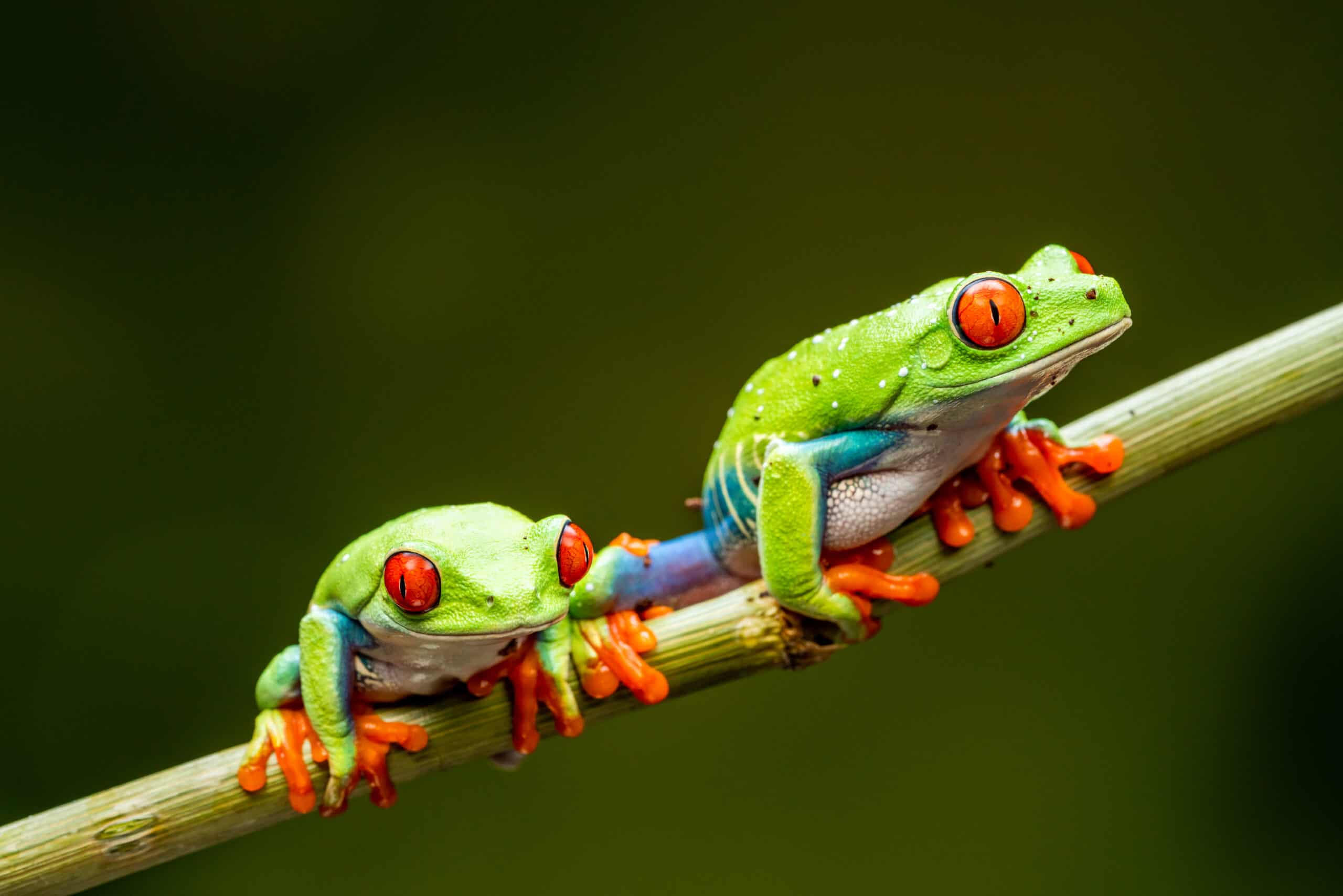
The Red-Eyed Tree Frog is instantly recognizable by its bright red eyes, vibrant green body, and blue-and-yellow sides. It spends its life in the humid canopies, using its suction-cup-like toes to cling to leaves and branches. This small amphibian is nocturnal, emerging at night to feed on insects. Its vivid coloration helps to startle predators, giving it a chance to escape to safety in the dense foliage.
Sun Bear
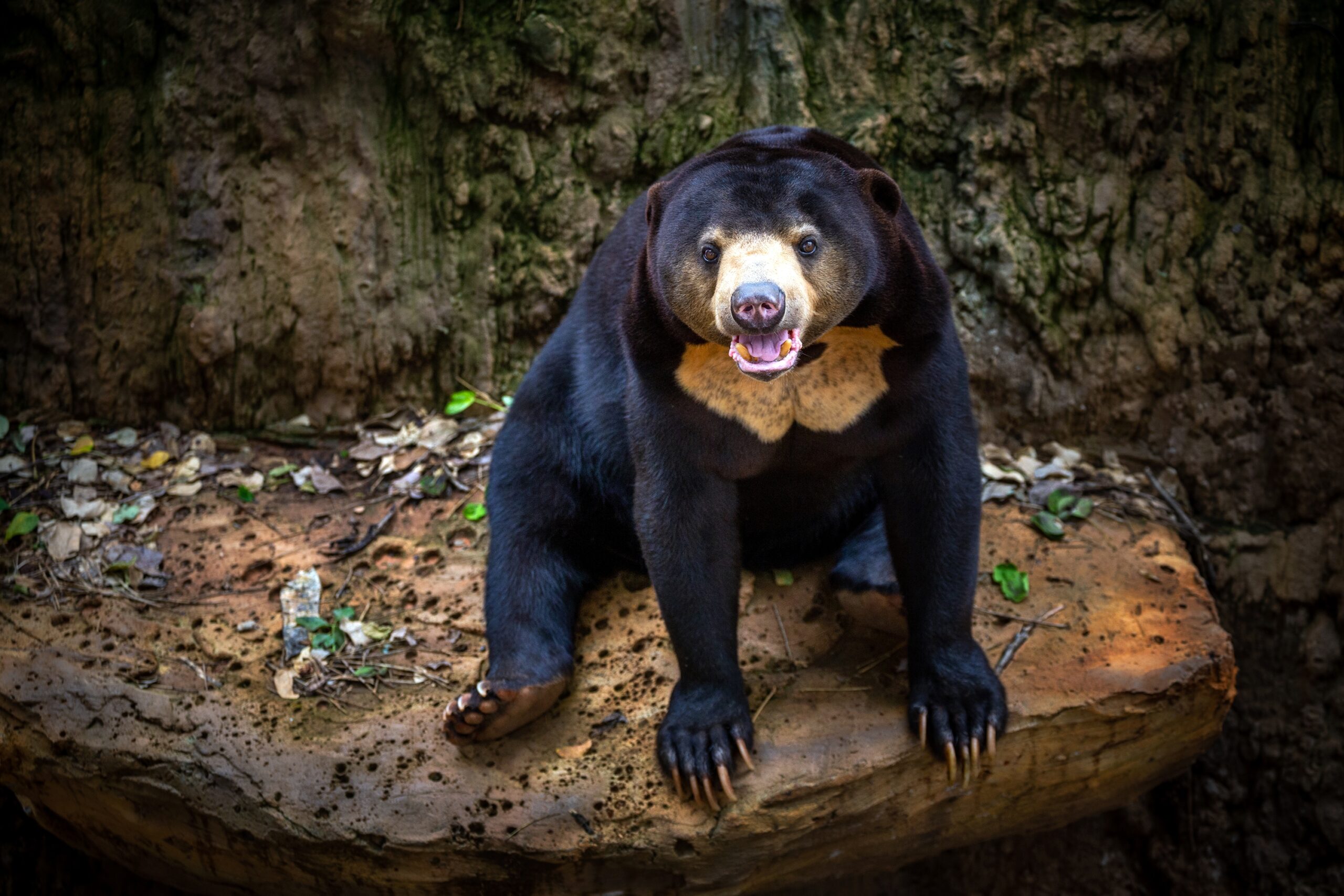
Despite its small size compared to other bears, the Sun Bear is a skilled climber, spending much of its time in the forest canopy. Known for its short black fur and distinctive orange chest patch, it uses its long claws and powerful limbs to scale trees in search of honey, insects, and fruit. The Sun Bear’s arboreal lifestyle helps it avoid larger predators and reach food sources unavailable to ground-dwelling animals.
Kinkajou
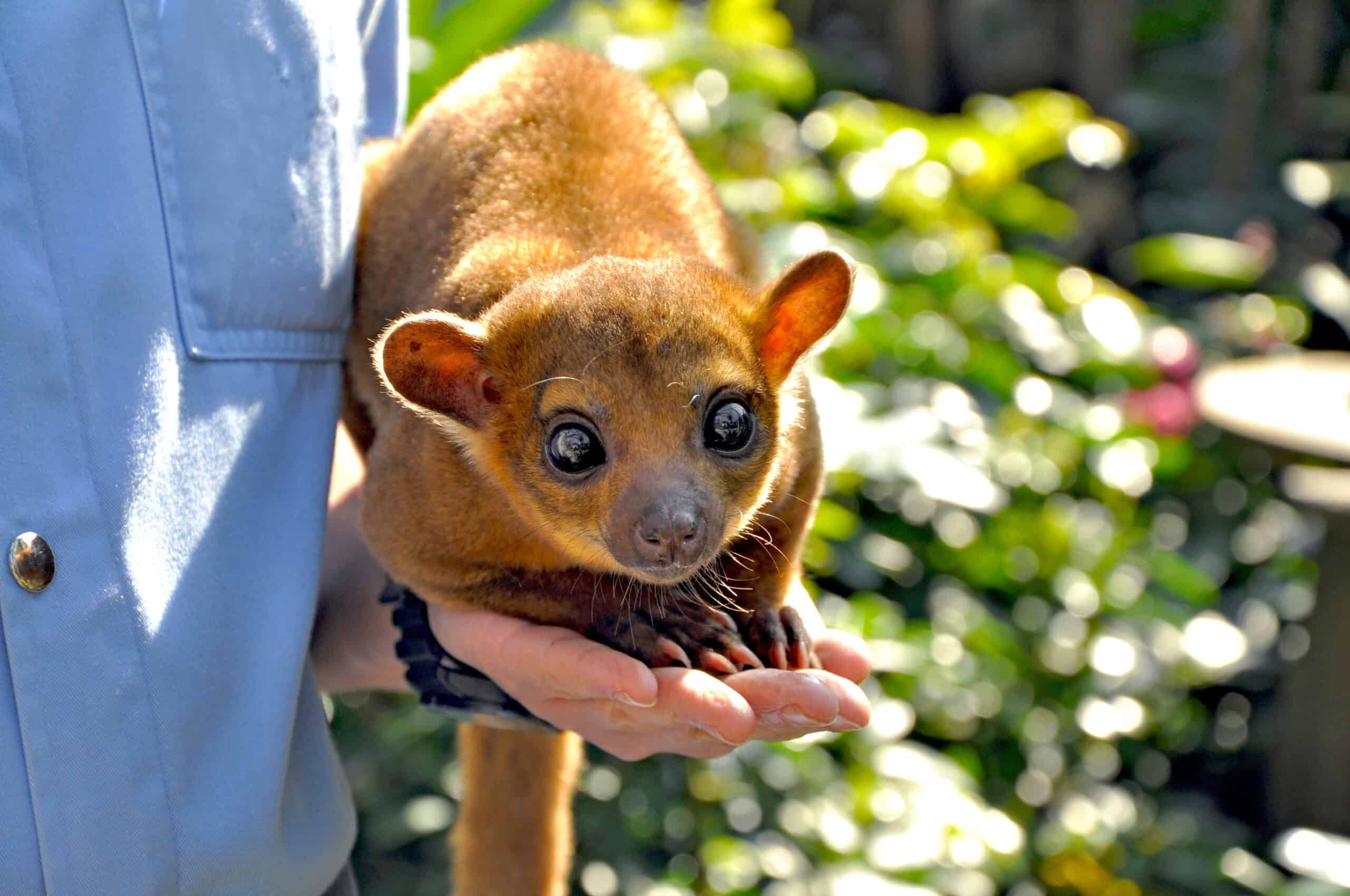
The Kinkajou, also called the “honey bear,” is a nocturnal mammal that thrives in the treetops of tropical forests. With its prehensile tail and nimble fingers, it easily navigates through the canopy in search of fruit, nectar, and small animals. Its long tongue helps it reach into flowers to lap up nectar, making it an important pollinator. Kinkajous are highly social, often found in small groups as they move through the forest.
Spectral Tarsier
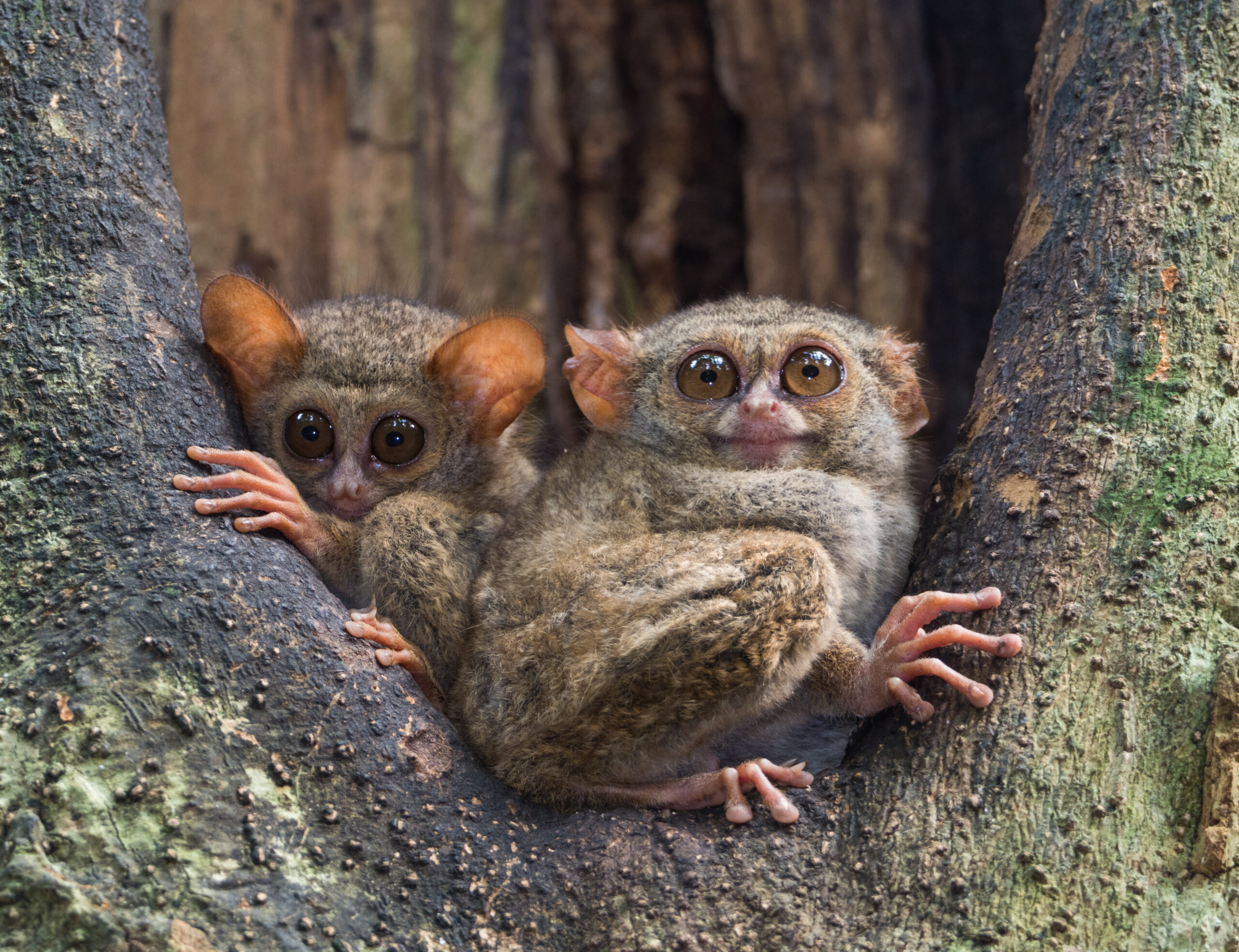
The Spectral Tarsier is a small primate with enormous eyes, perfectly adapted for its nocturnal life in the forest canopy. It is an expert jumper, able to leap from tree to tree using its long hind legs and agile body. This tiny creature preys on insects, small birds, and reptiles, using its keen senses to hunt in the dark. Its large eyes provide excellent night vision, while its long fingers and toes help it grip branches as it moves silently through the trees.
Tayra
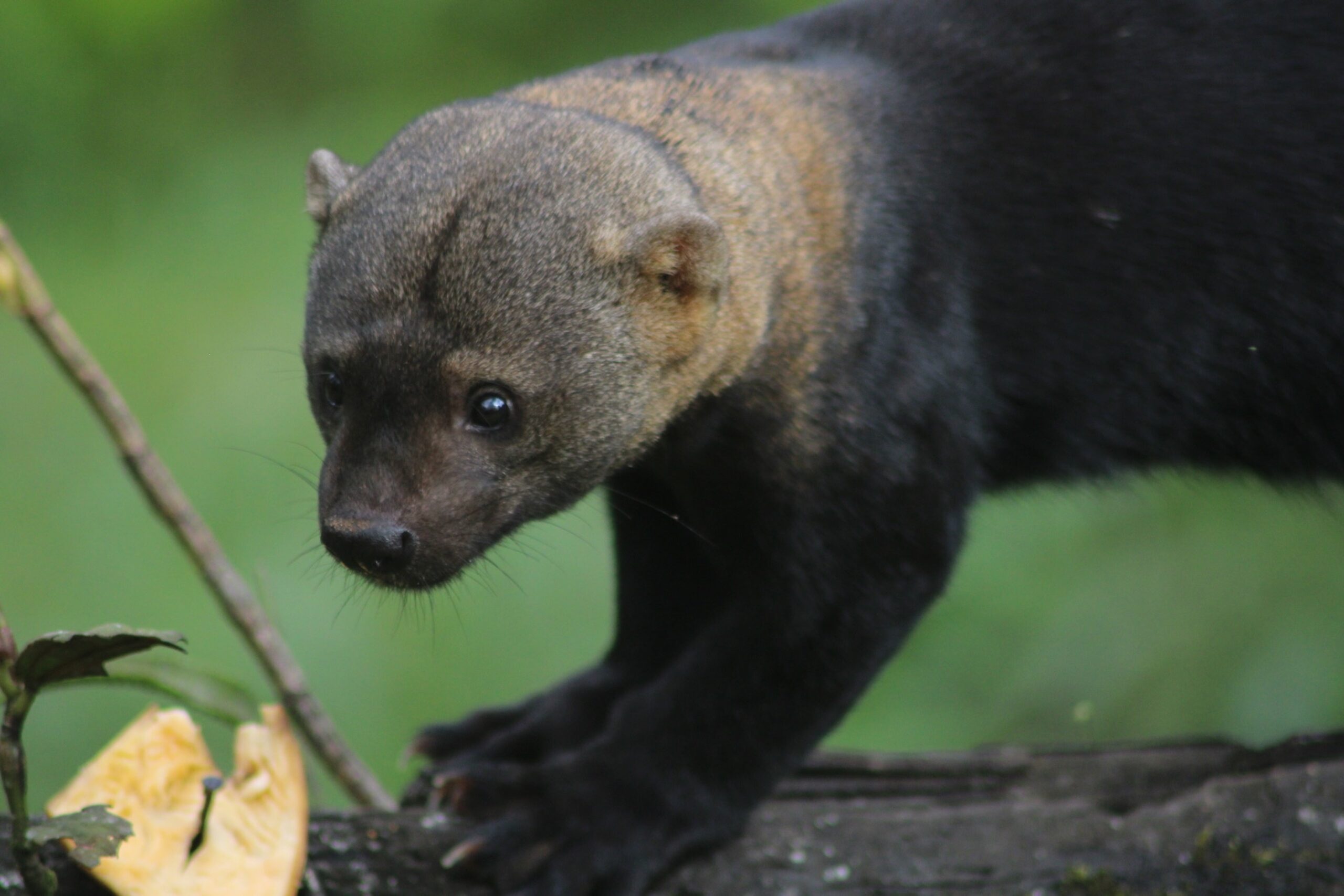
The Tayra is a weasel-like mammal known for its agility in the forest canopy. It has a sleek, flexible body and sharp claws, making it an excellent climber. Tayras are opportunistic hunters, feeding on a variety of foods, including small mammals, fruits, and insects. Their quick movements and keen senses allow them to chase prey through the treetops with ease. Though they are mostly solitary, they are highly adaptable and can thrive in various forest environments.
Clouded Leopard
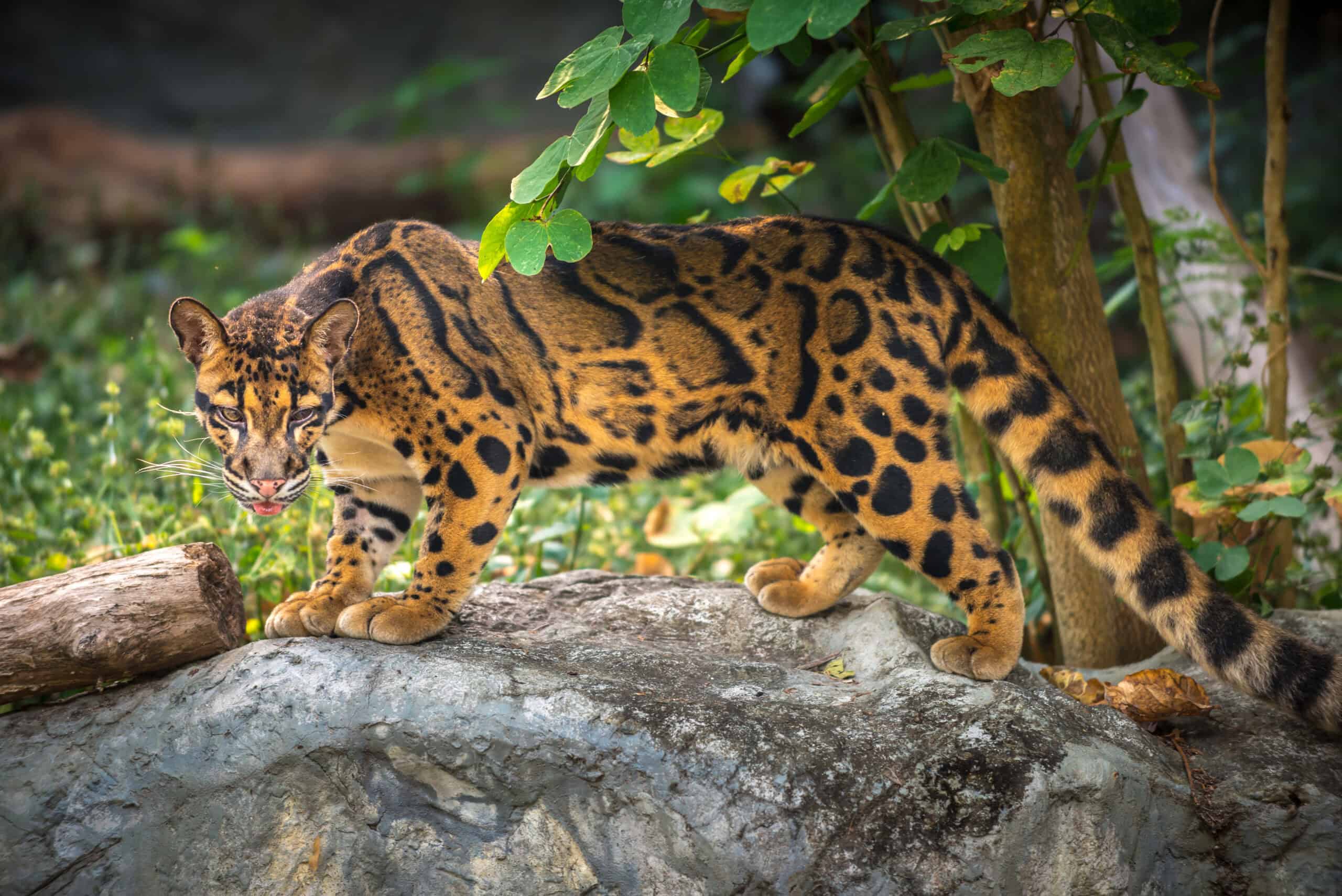
The Clouded Leopard is a medium-sized cat known for its exceptional climbing abilities. It has strong limbs and sharp claws that allow it to scale trees and even hang upside down from branches. Its long tail helps maintain balance while navigating through the dense forest canopy. The Clouded Leopard is also a skilled hunter, preying on birds and small mammals. Its unique cloud-like spots provide excellent camouflage in the dappled sunlight of the treetops.
Margay
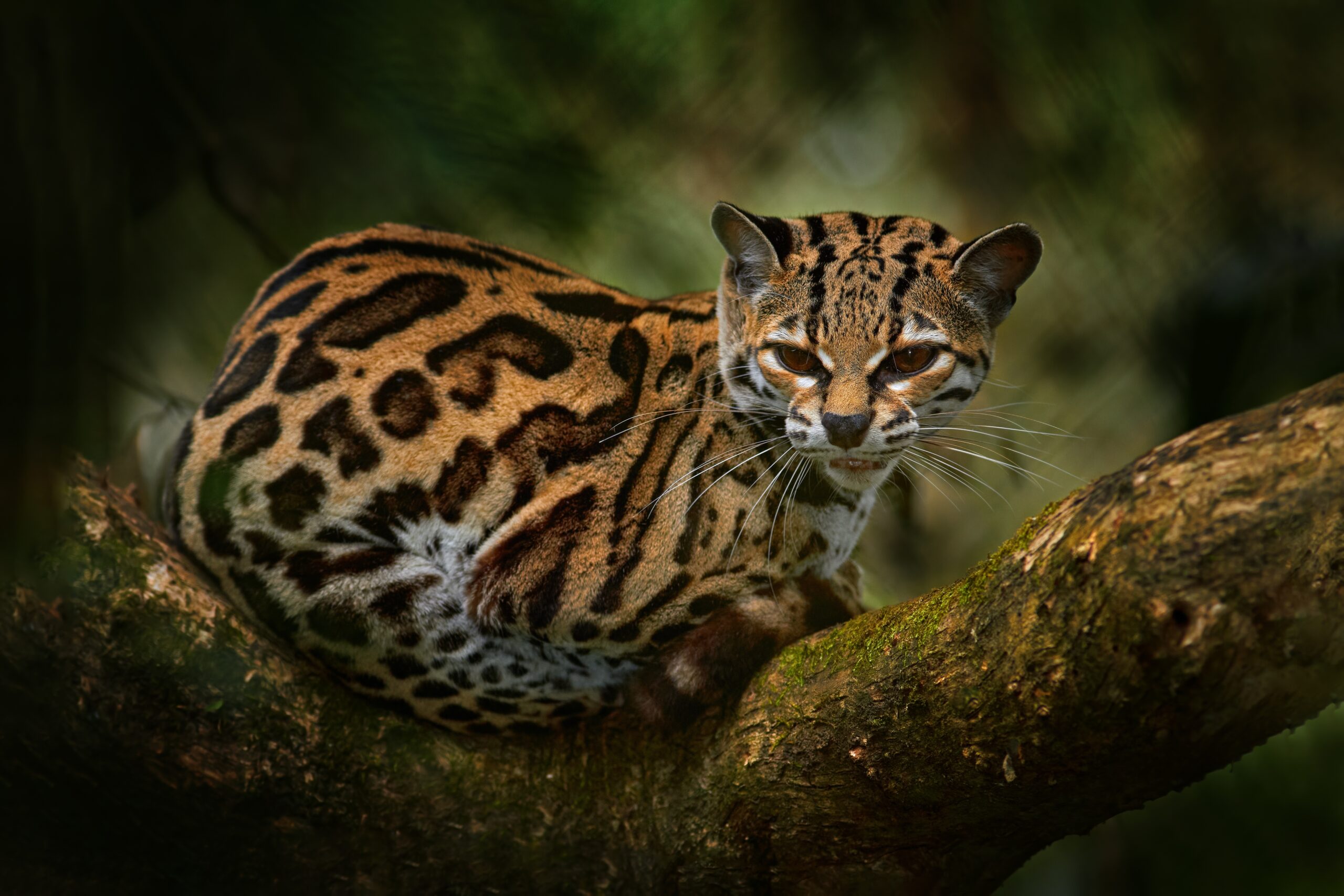
The Margay is a small, nocturnal wildcat perfectly adapted to life in the trees. It has a remarkable ability to rotate its ankles, allowing it to climb headfirst down tree trunks. This skill makes it one of the most agile climbers in the animal kingdom. The Margay primarily hunts birds, reptiles, and small mammals, using its stealth to move silently through the dense canopy. Its spotted coat blends seamlessly with the forest surroundings, offering it protection from predators.
Binturong
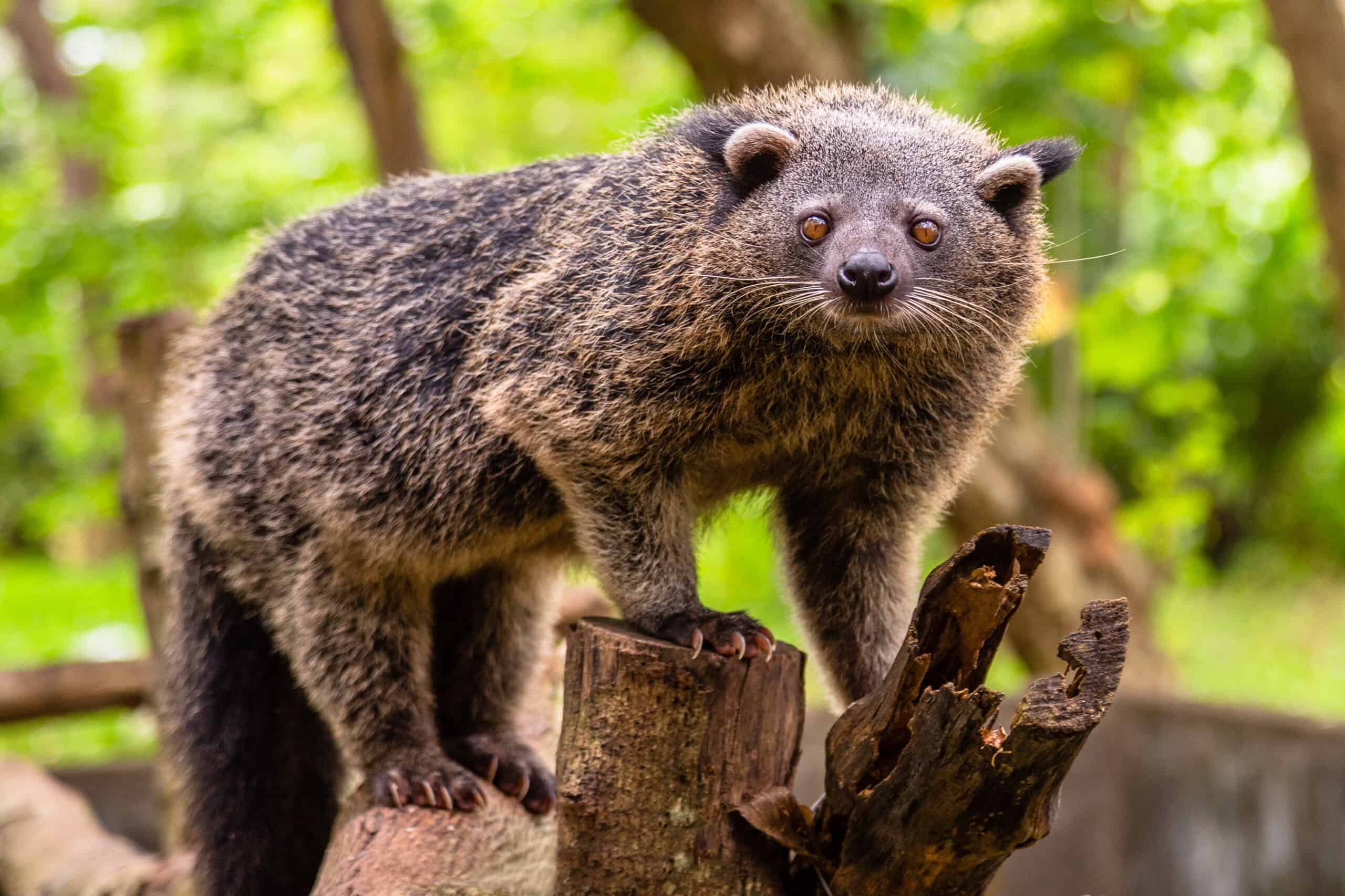
The Binturong, also known as the bearcat, is a curious mammal that spends much of its life in the trees. It has a prehensile tail that acts like a fifth limb, helping it grasp branches as it moves through the canopy. Binturongs are omnivores, feeding on fruit, small animals, and leaves. They are also known for their distinct popcorn-like smell, a unique scent produced by their glands. With their slow, deliberate movements, Binturongs are perfectly suited to a life in the dense forest canopy.
Harpy Eagle
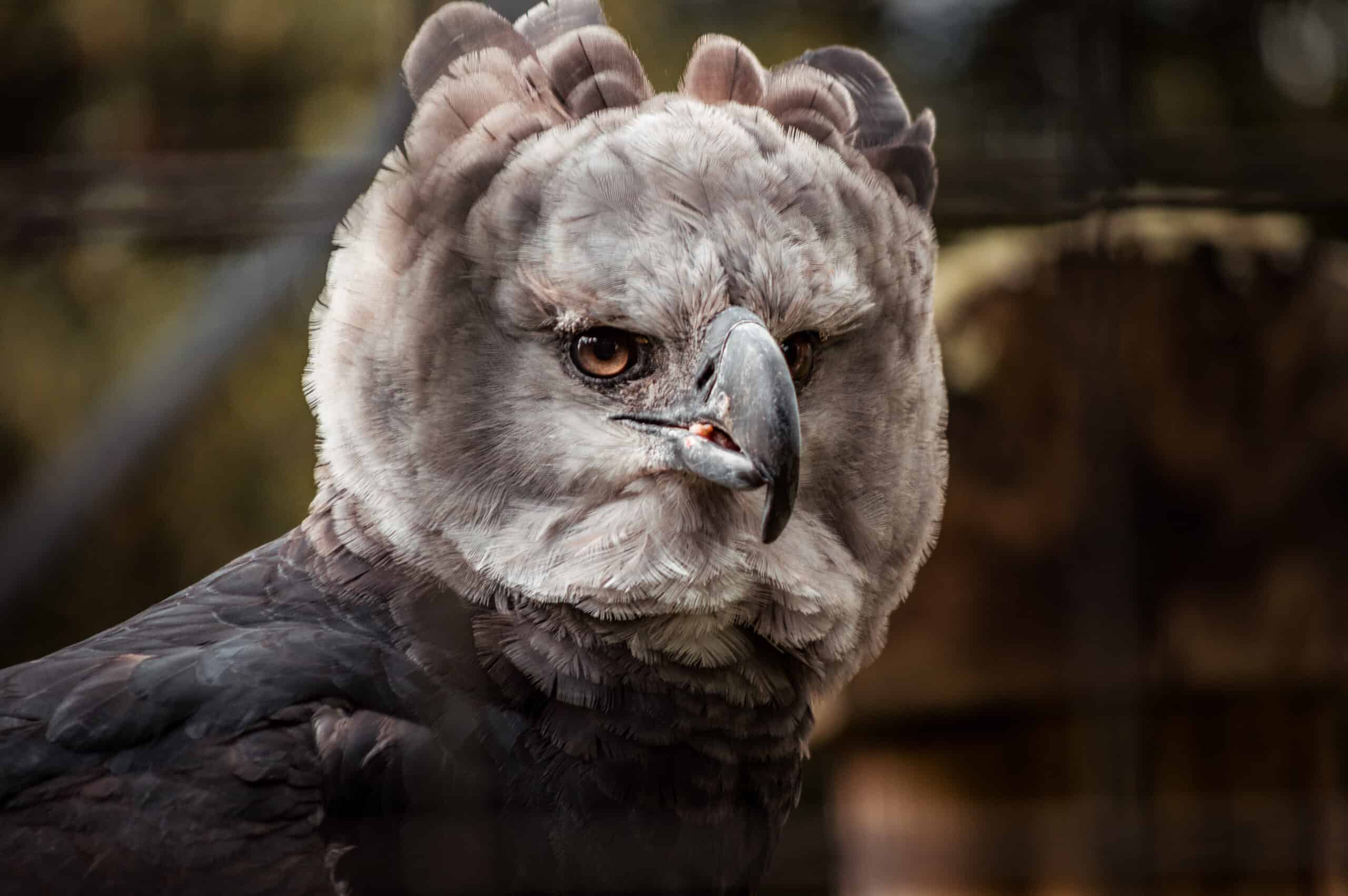
The Harpy Eagle is one of the largest and most powerful eagles in the world, perfectly suited to the dense forests of Central and South America. It has massive talons and strong wings, allowing it to snatch monkeys and sloths from the treetops with ease. Its broad wings are adapted for short bursts of flight through the thick canopy. This eagle’s keen eyesight allows it to spot prey from great distances, making it a top predator in its forest habitat.
Leaf-Tailed Gecko
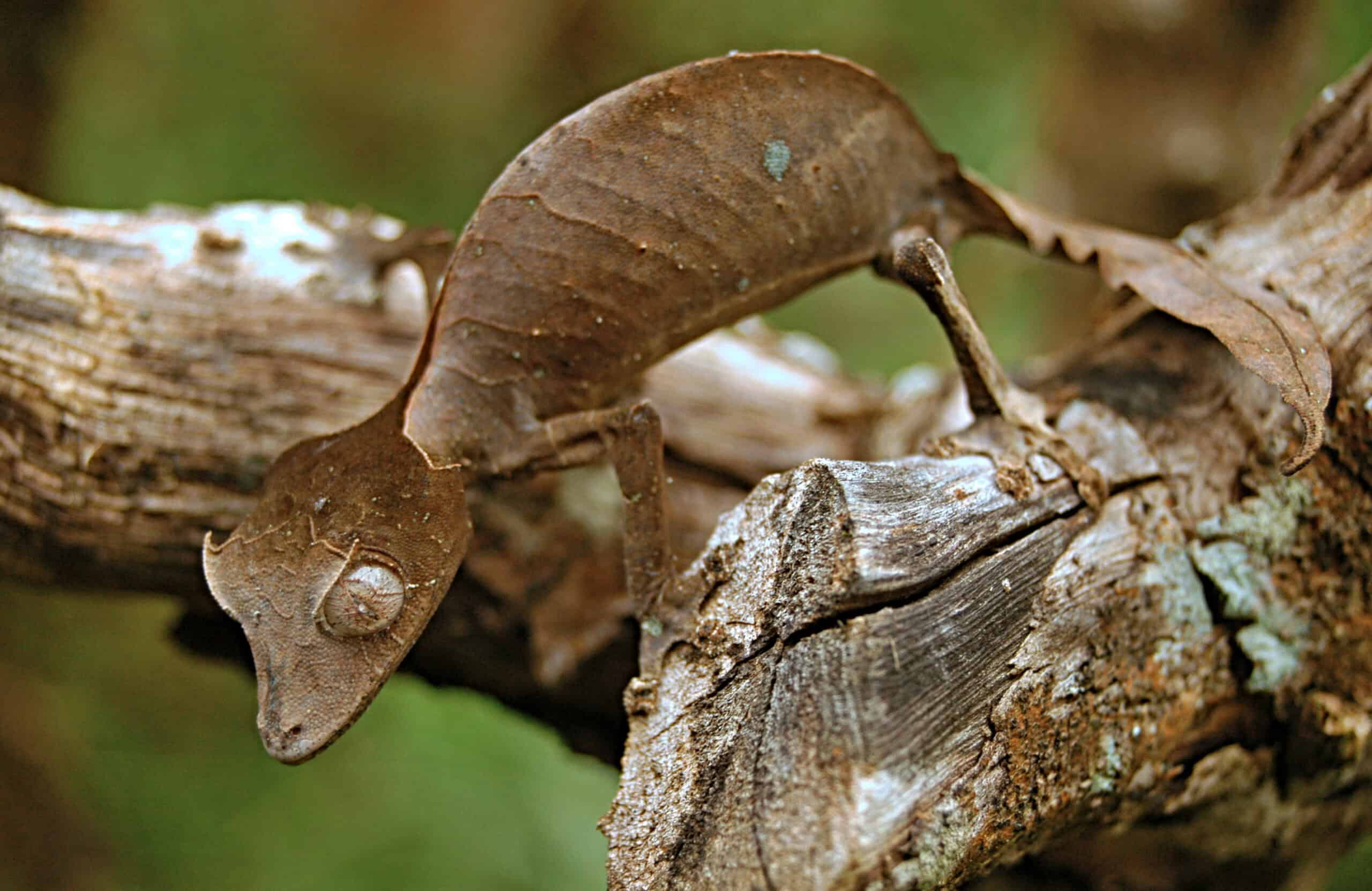
The Leaf-Tailed Gecko is a master of disguise, blending perfectly into its environment. Its flattened body and leaf-shaped tail mimic the appearance of dead leaves, offering it excellent camouflage. Found in the forests of Madagascar, this nocturnal gecko uses its sticky toe pads to cling to branches and leaves in the canopy. It feeds on insects and small invertebrates, relying on its stealth to remain unseen by both prey and predators.
Crowned Eagle
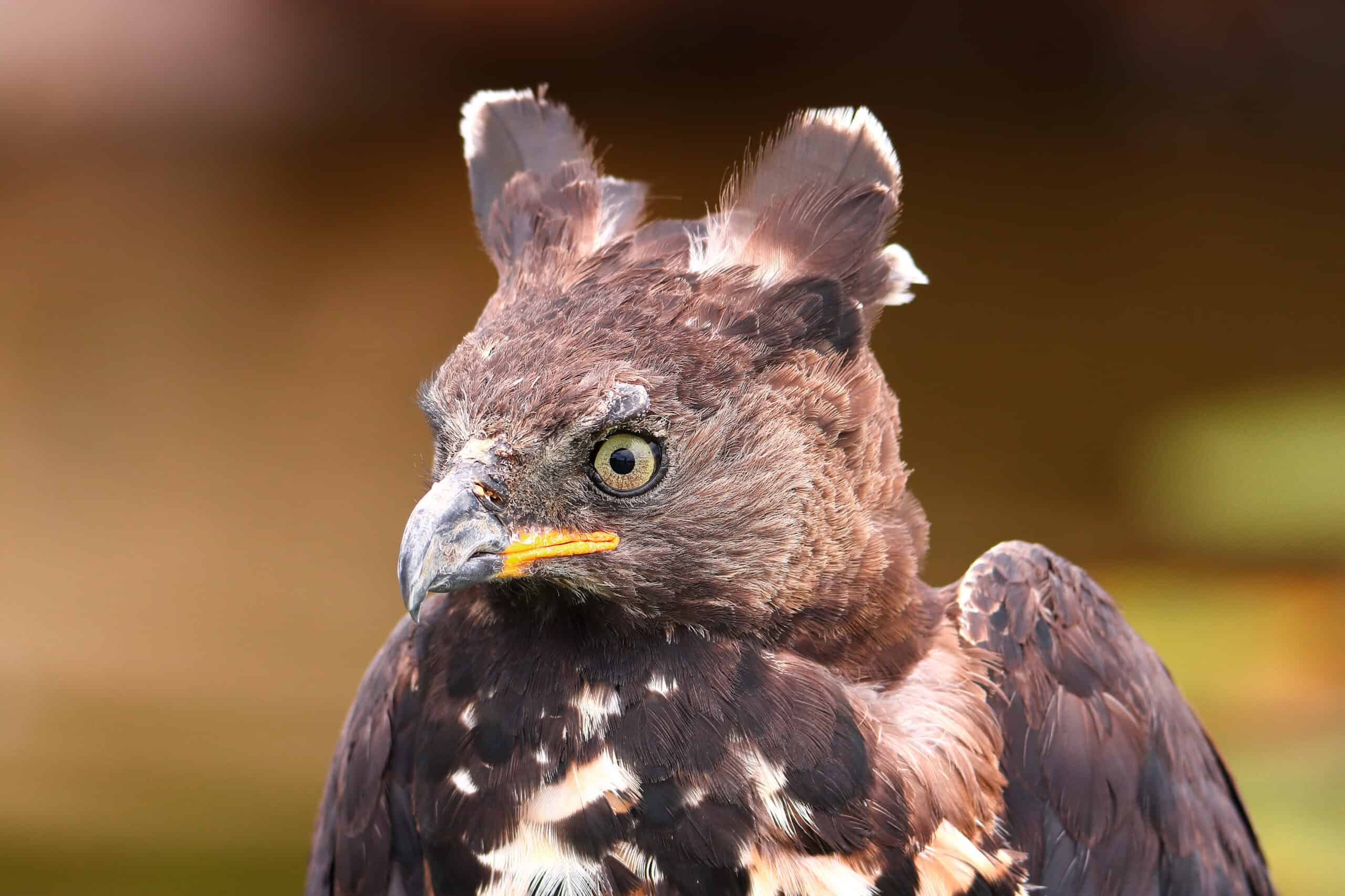
The Crowned Eagle is a powerful bird of prey found in the forests of sub-Saharan Africa. It has strong talons and muscular legs, enabling it to take down large prey like monkeys and small antelope. The dense forest canopy is its hunting ground, where it uses its short, broad wings for agile flight. Its piercing eyesight and formidable hunting skills make it one of the top predators in the forest.
Philippine Eagle
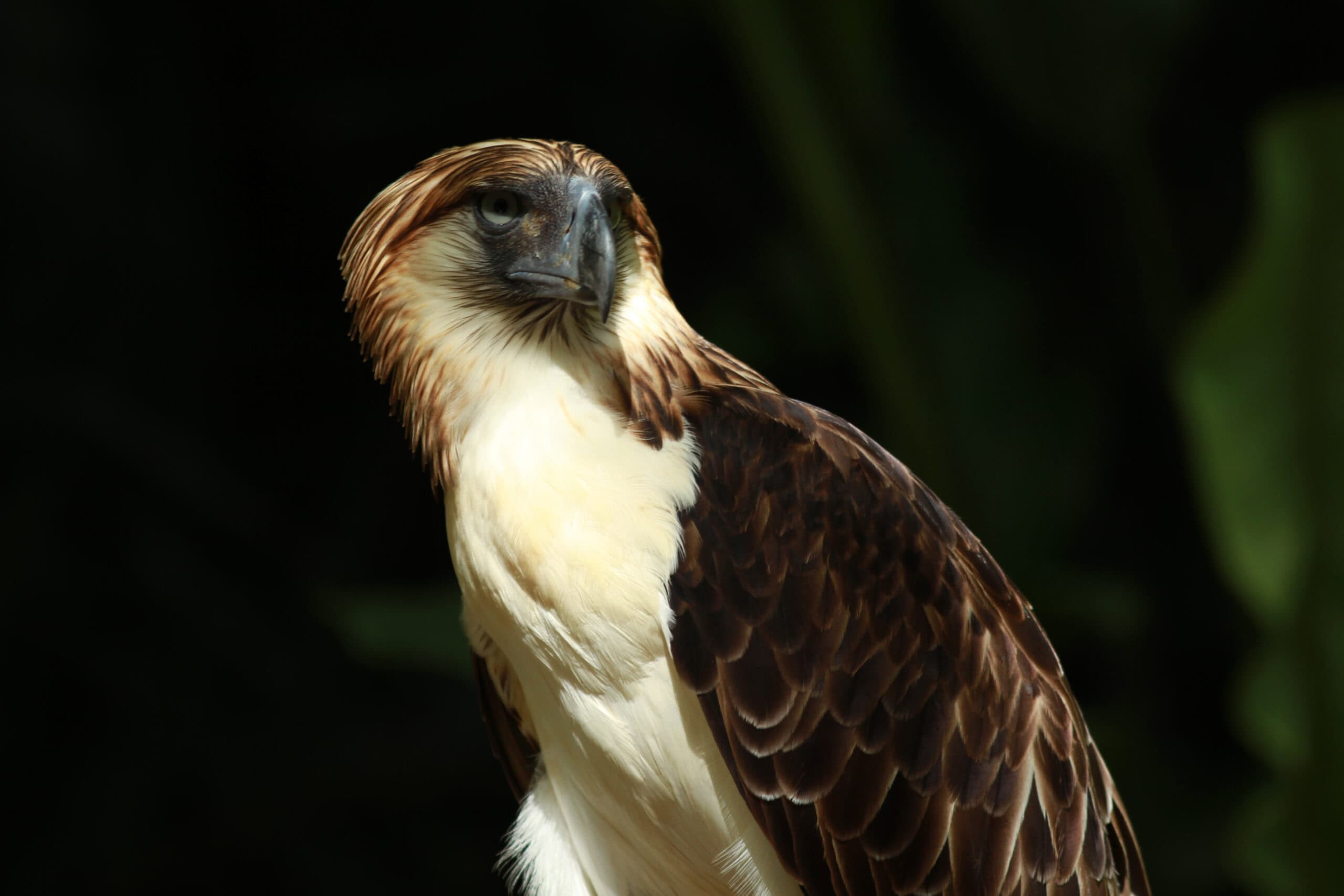
The Philippine Eagle, also known as the monkey-eating eagle, is one of the world’s largest and rarest eagles. It inhabits the dense forests of the Philippines, where it hunts monkeys, birds, and other small animals. With its sharp talons and strong beak, the eagle is a powerful predator. Its broad wings are adapted for maneuvering through the canopy, allowing it to fly between trees with precision. This endangered species plays a crucial role in maintaining the balance of its forest ecosystem.
Golden Langur
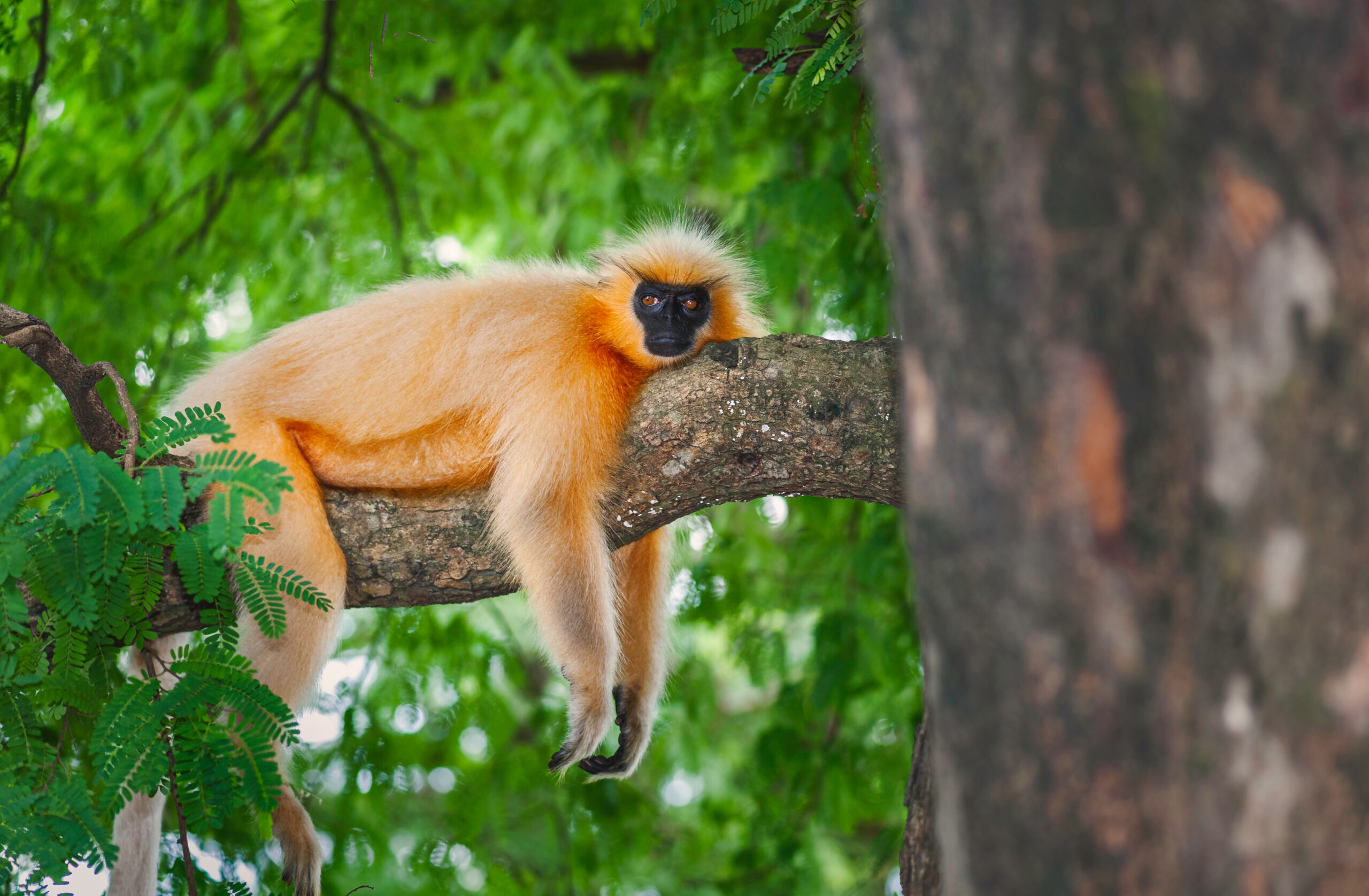
The Golden Langur is a striking primate known for its beautiful golden-orange fur. It lives in the forest canopies of Bhutan and India, where it leaps gracefully from tree to tree. Its long tail helps it maintain balance as it navigates through the dense treetops in search of leaves and fruits. Golden Langurs are social animals, often found in groups, relying on their agility and cooperation to thrive in the forest canopy.
White-Headed Capuchin
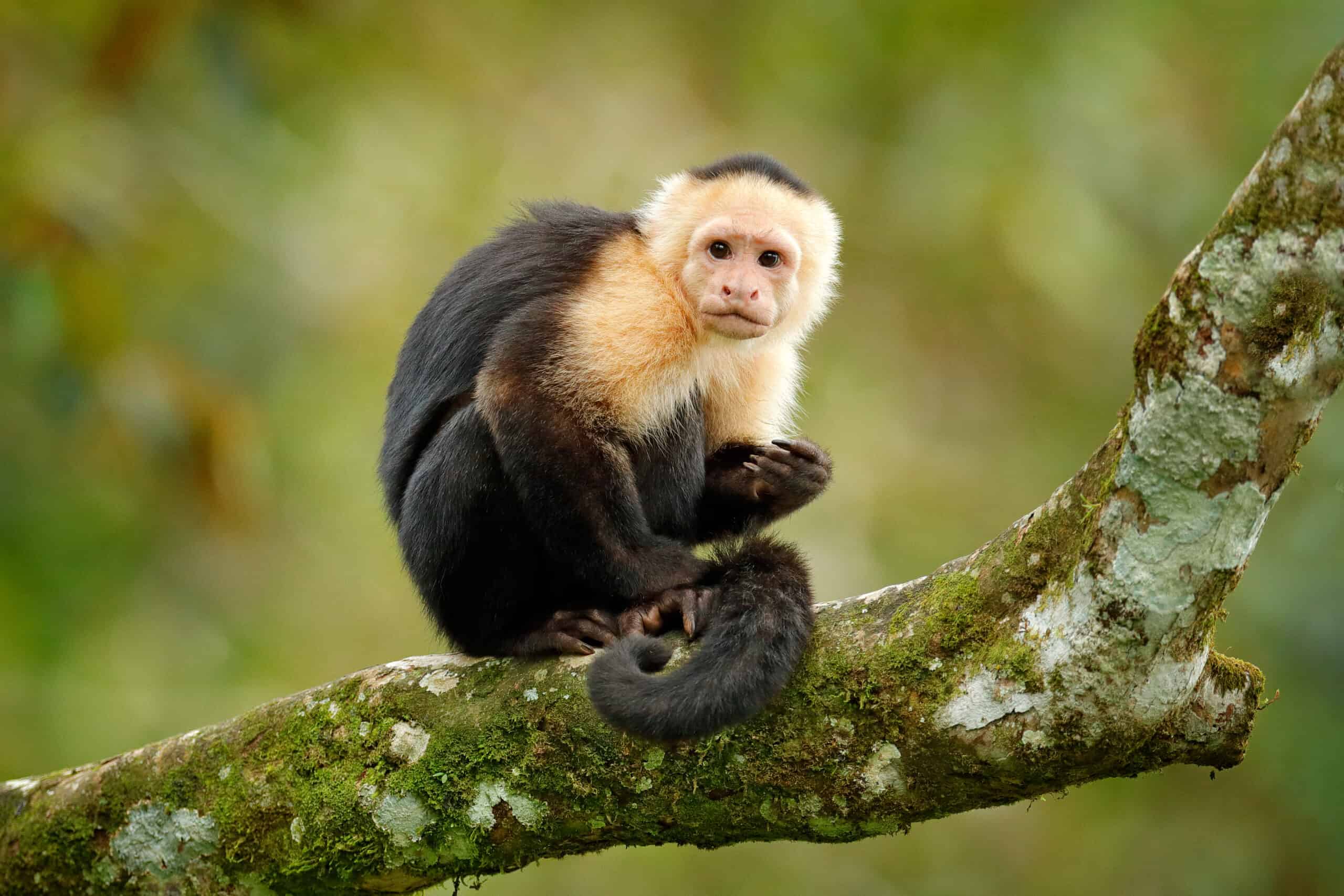
The White-Headed Capuchin is an agile monkey native to Central and South American forests. Known for its intelligence, this small primate uses its nimble hands to forage for food, including fruits, insects, and small animals. Its strong tail acts like a fifth limb, helping it balance and move gracefully through the trees. Social by nature, White-Headed Capuchins are often found in groups, communicating with a variety of vocalizations and gestures as they navigate the canopy.
Pygmy Marmoset
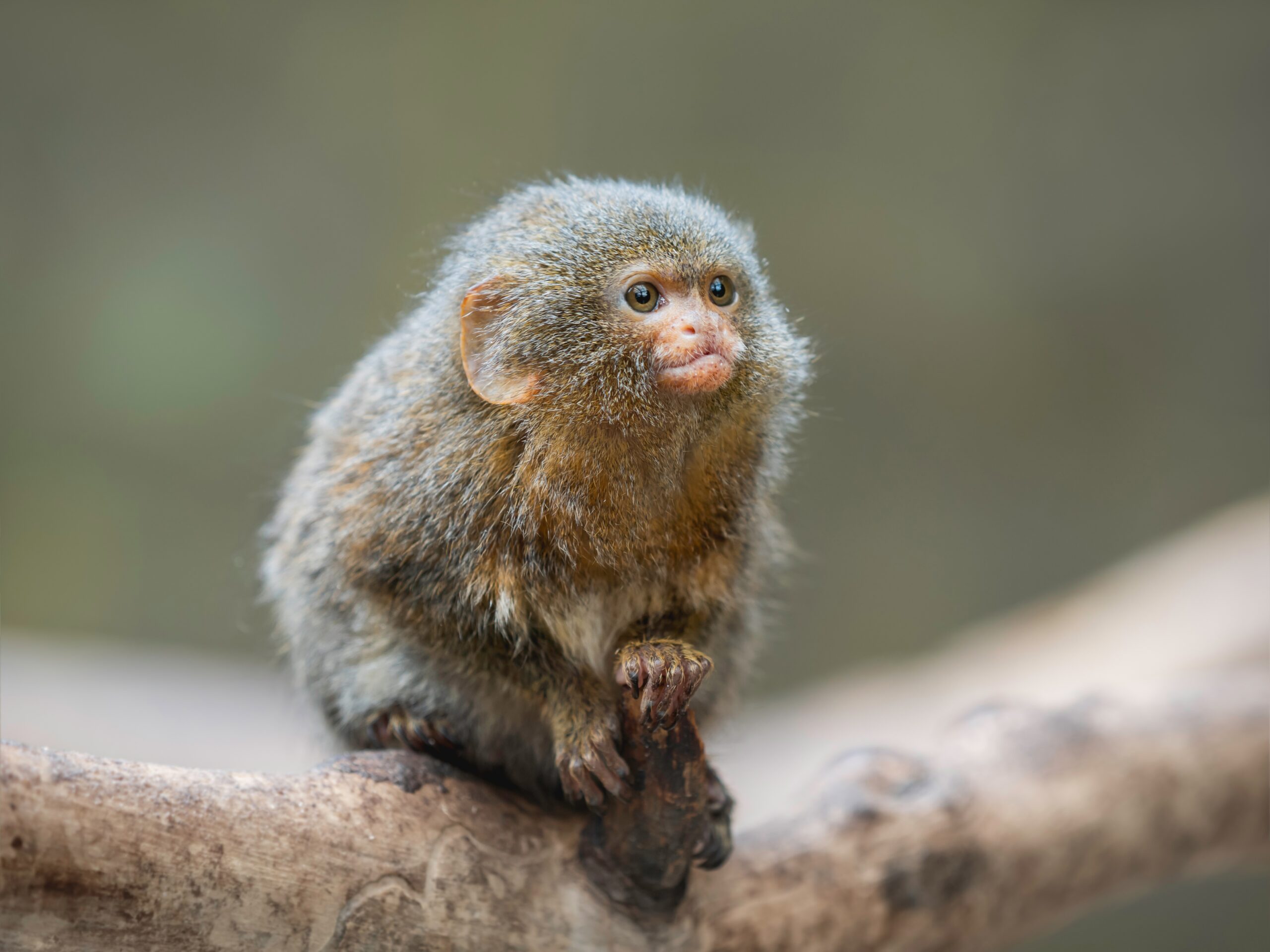
The Pygmy Marmoset is the smallest monkey in the world, weighing just 100 grams. Found in the Amazon rainforest, it has sharp claws that help it cling to tree trunks as it searches for tree sap, its main food source. This tiny primate is incredibly agile, able to leap from branch to branch with ease. Its small size and camouflaged fur make it difficult for predators to spot, ensuring its survival in the dense forest canopy.
Helmeted Hornbill
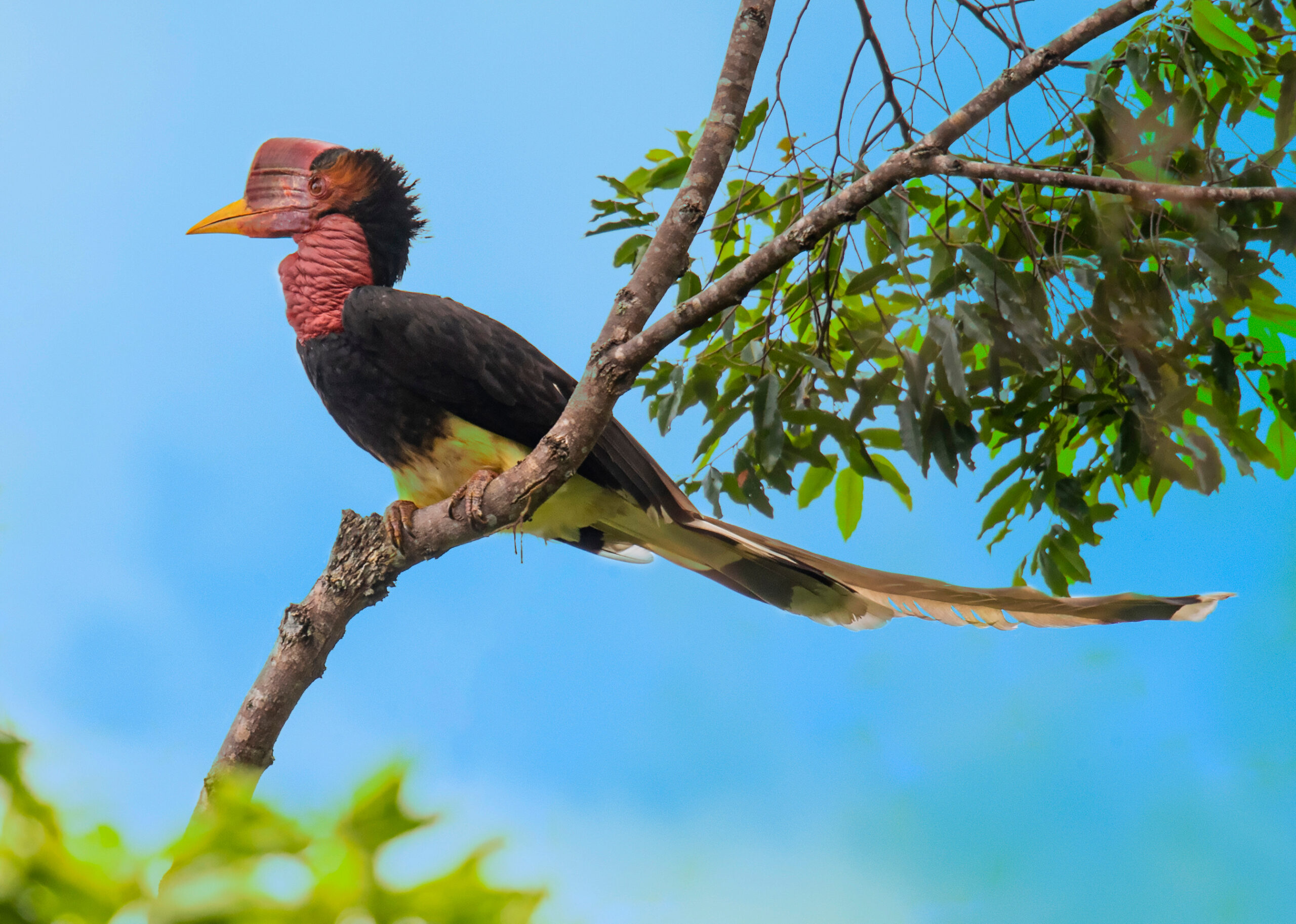
The Helmeted Hornbill is a large bird known for its striking casque, a solid structure on its head that it uses in aerial combat with other males. This rare bird is found in the rainforests of Southeast Asia, where it forages for fruit, particularly figs, high in the trees. Its broad wings allow it to fly between the dense branches with ease. The Helmeted Hornbill is also known for its loud, cackling call that echoes through the forest canopy.
Silky Anteater
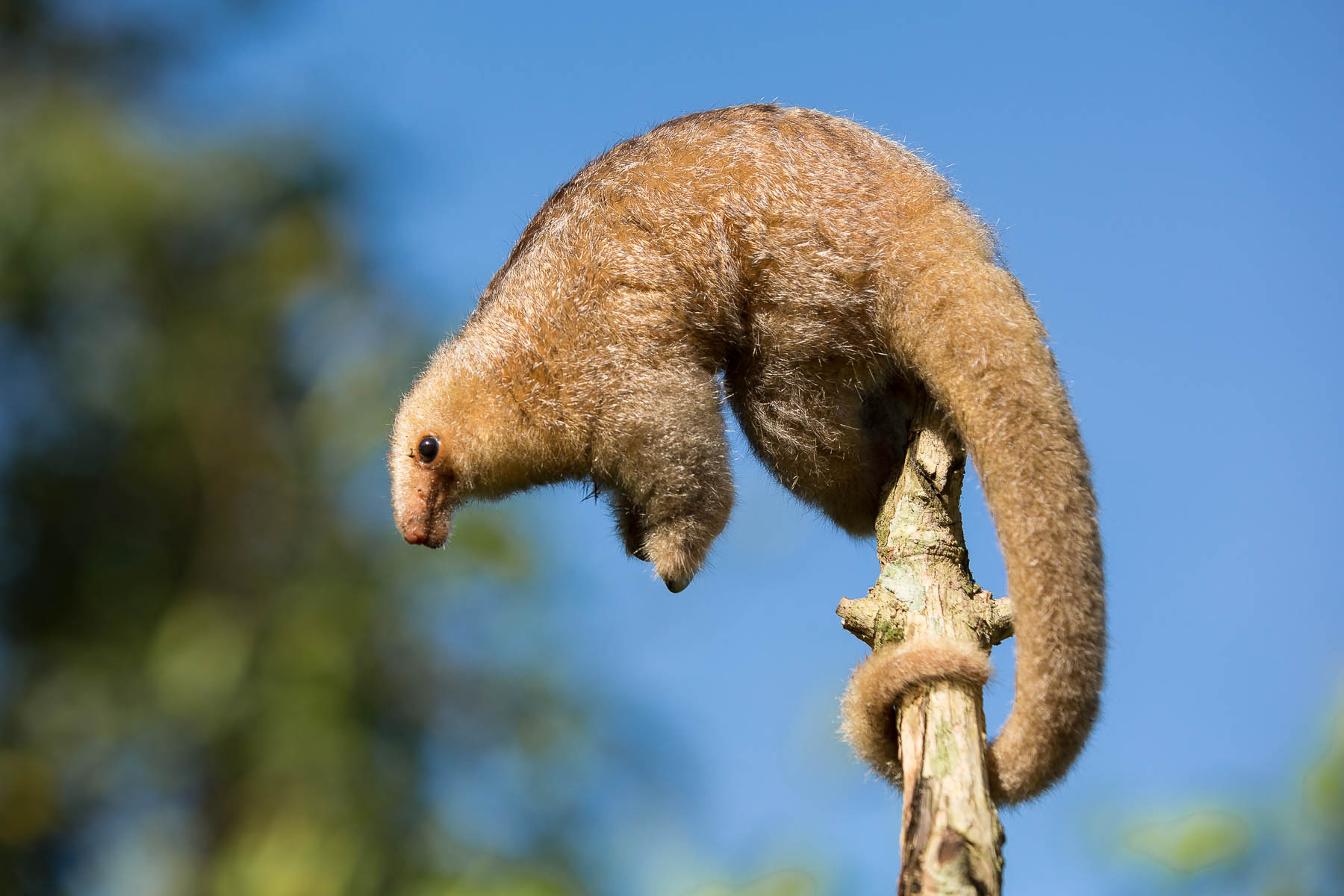
The Silky Anteater, also called the pygmy anteater, is a tiny nocturnal mammal that thrives in the dense forests of Central and South America. It has long, curved claws that help it cling to branches as it forages for ants and termites. Its silky, golden fur blends with the surroundings, making it nearly invisible in the treetops. This small, slow-moving anteater spends most of its life in the canopy, using its prehensile tail for balance.
Sifaka Lemur
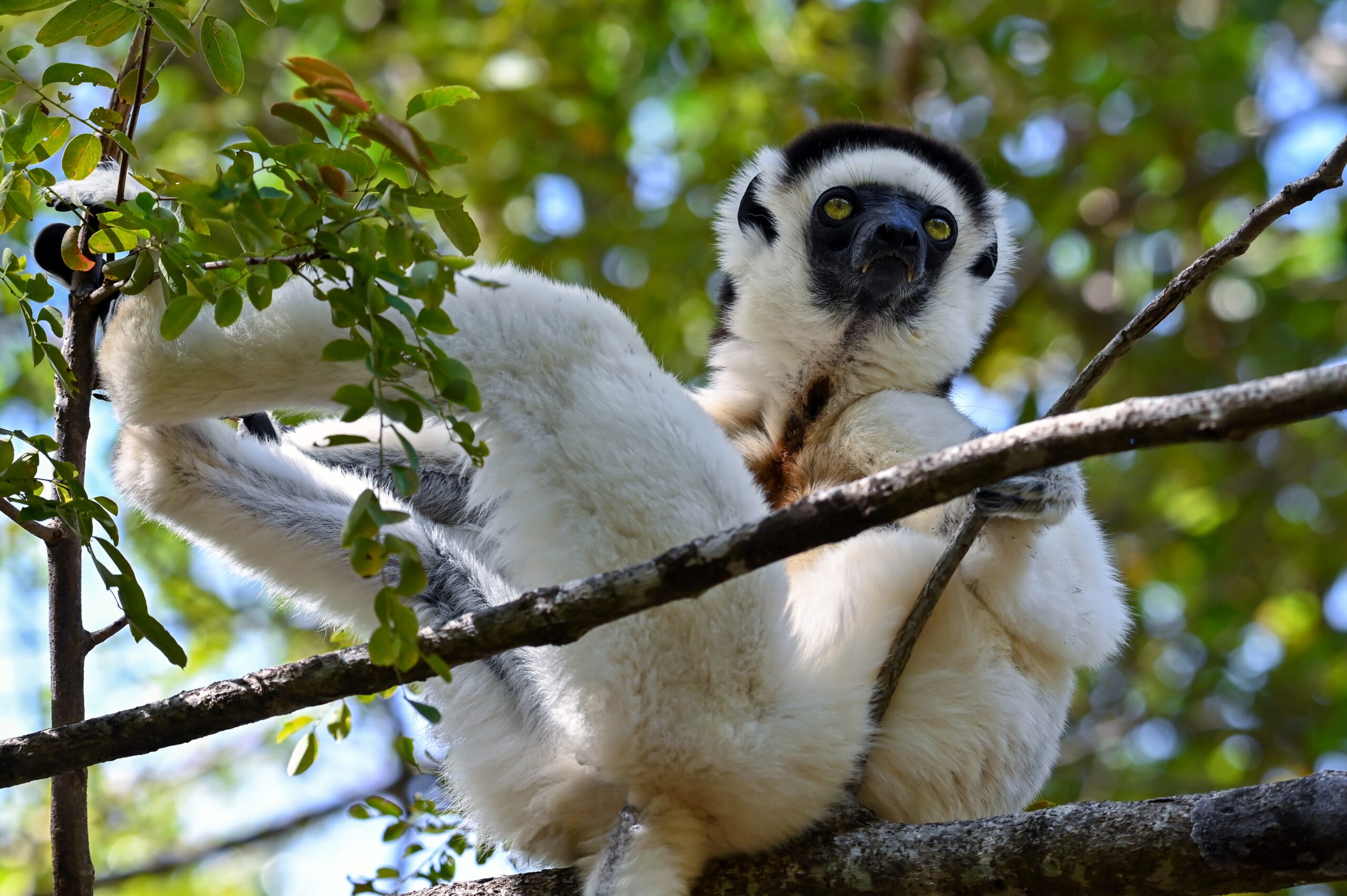
Sifaka Lemurs are known for their incredible leaping ability, effortlessly jumping up to 10 meters between trees. These primates are found in Madagascar’s forests, where they navigate the canopy with ease. Their strong hind legs and long arms are perfectly adapted for moving through the treetops in search of leaves, fruits, and flowers. Sifakas live in social groups and communicate with a variety of sounds as they travel through their forest homes.
Woolly Monkey
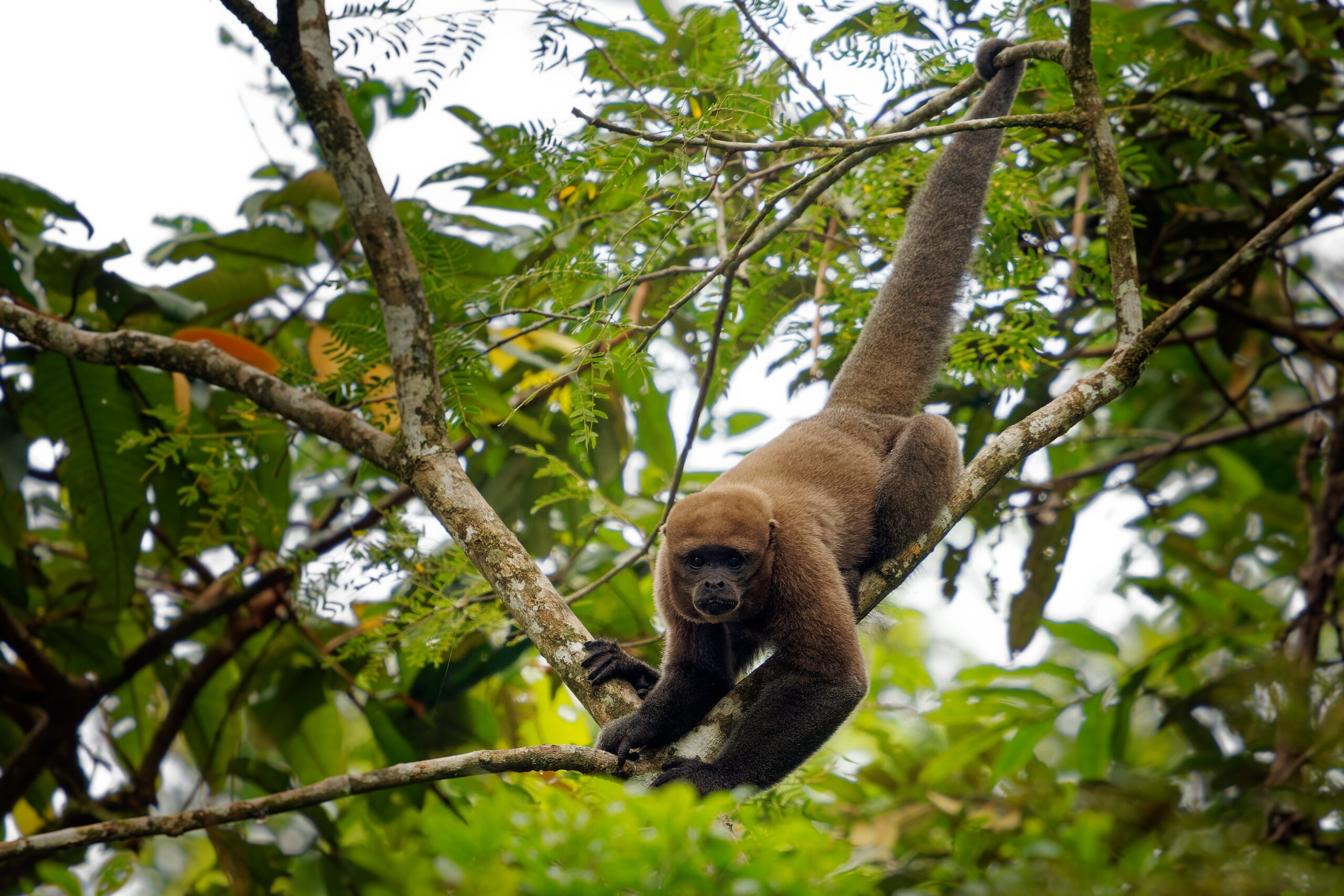
The Woolly Monkey is a large primate found in the Amazon rainforest, where it spends its life high in the canopy. Its thick, woolly fur protects it from the elements, while its strong prehensile tail provides excellent grip when moving through the trees. Woolly Monkeys live in large social groups, foraging for fruits, leaves, and insects. Their agility and strength make them well-adapted to the complex network of branches in the dense forest canopy.
This article originally appeared on Rarest.org.
More from Rarest.org
17 Oddest Cultural Taboos You Never Knew Existed

Every culture has its own unique set of customs and traditions, and some may seem surprising or even strange to outsiders. Read More.
11 Highly Desired Antique Kitchenware Items Collectors Treasure

Collecting antique kitchenware offers a glimpse into history while adding charm to any kitchen or display. Read More.
15 Lavish Resorts Favored by the World’s Richest

For the world’s wealthiest, luxury resorts offer more than just a place to stay—they provide an unparalleled escape where every need is anticipated, and privacy is guaranteed. Read More.
